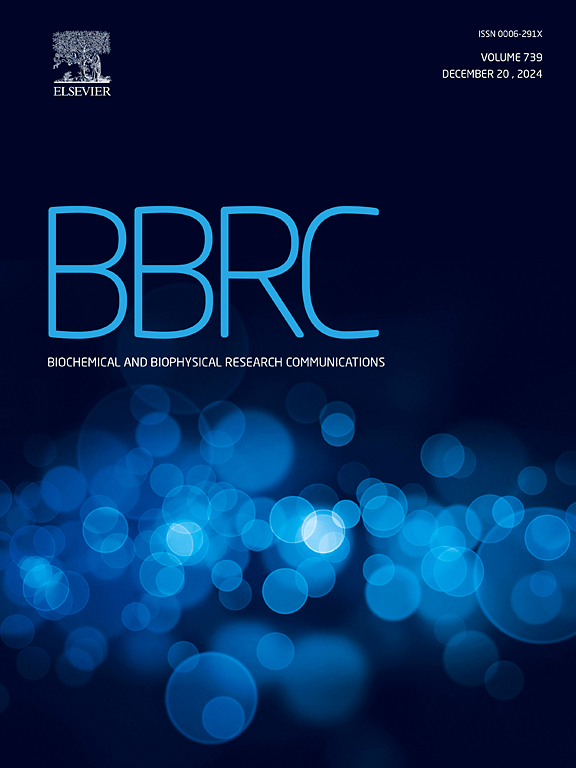Structure-based identification of dual targeting lead inhibitor to Marburg virus glycoprotein and Chandipura virus nucleoprotein: Insights from molecular docking, dynamics and binding free energy analyses
IF 2.2
3区 生物学
Q3 BIOCHEMISTRY & MOLECULAR BIOLOGY
Biochemical and biophysical research communications
Pub Date : 2025-06-20
DOI:10.1016/j.bbrc.2025.152239
引用次数: 0
Abstract
Marburg virus (MARV) and Chandipura virus (CHPV), belonging to the families filoviridae and rhabdoviridae, respectively, are RNA viruses producing a hemorrhagic fever and severe encephalitis with a high mortality rate. The present study computationally explores the antiviral potential of bioactive molecules from Glycyrrhiza glabra (Licorice root) against the glycoprotein (GP) of MARV and nucleoprotein (NP) of CHPV. The 3D structures of GP and NP are not available in their native forms, and these structures were computationally modelled and validated for their structural and stereochemical properties. Licorice compounds with satisfactory pharmacokinetics such as drug likeness and ADMET, were docked against these targets, and comparison was made with the docking results of the reference antiviral drug, favipiravir and the target VP35 by using their binding affinities. Apigenin possessed the highest binding affinity with GP and NP at −6.3 and −7.1 kcal/mol, respectively, with greater binding affinities compared to favipiravir and VP35 at −4.2 kcal/mol. Additional stability of apigenin-protein complexes was investigated by MD simulations, including RMSD, RMSF, H-bonds, PCA, FEL, and DCCM analyses. These revealed a stable conformational stability and interaction formation in apigenin-protein complexes, however, apigenin-GP complex was found more stable than apigenin-NP. Binding free energy calculations, conducted using MM/GBSA and MM/PBSA, also estimated ΔG values of −679.65 kcal/mol and −92.30 kcal/mol for apigenin-GP and apigenin-NP complexes. This in silico model highlights apigenin from Glycyrrhiza glabra as a potential dual targeting antiviral therapeutic against both CHPV and MARV, and finds significant applications in further in vitro and in vivo validation.

马尔堡病毒糖蛋白和chanddipura病毒核蛋白双靶向先导抑制剂的结构鉴定:来自分子对接、动力学和结合自由能分析的见解
马尔堡病毒(MARV)和昌迪普拉病毒(CHPV)分别属于丝状病毒科和横纹肌病毒科,是导致出血热和严重脑炎的RNA病毒,死亡率高。本研究通过计算探索甘草根生物活性分子对MARV糖蛋白(GP)和CHPV核蛋白(NP)的抗病毒潜力。GP和NP的三维结构在其原生形态中是不可用的,这些结构被计算建模并验证了它们的结构和立体化学性质。将具有药物相似性和ADMET等满意药代动力学的甘草化合物与这些靶点对接,并利用其结合亲和力与参比抗病毒药物favipiravir与靶点VP35的对接结果进行比较。Apigenin与GP和NP的结合亲和力最高,分别为- 6.3和- 7.1 kcal/mol,与favipiravir和VP35的结合亲和力为- 4.2 kcal/mol相比,Apigenin与GP和NP的结合亲和力更高。通过MD模拟,包括RMSD、RMSF、氢键、PCA、FEL和DCCM分析,研究了芹菜素蛋白复合物的稳定性。这些结果表明,芹菜素-蛋白复合物具有稳定的构象稳定性和相互作用形成,但芹菜素- gp复合物比芹菜素- np复合物更稳定。使用MM/GBSA和MM/PBSA进行的结合自由能计算也估计了芹菜素- gp和芹菜素- np复合物的ΔG值分别为- 679.65 kcal/mol和- 92.30 kcal/mol。这个硅模型突出了甘草中的芹菜素作为一种潜在的针对CHPV和MARV的双重靶向抗病毒治疗药物,并在进一步的体外和体内验证中发现了重要的应用。
本文章由计算机程序翻译,如有差异,请以英文原文为准。
求助全文
约1分钟内获得全文
求助全文
来源期刊
CiteScore
6.10
自引率
0.00%
发文量
1400
审稿时长
14 days
期刊介绍:
Biochemical and Biophysical Research Communications is the premier international journal devoted to the very rapid dissemination of timely and significant experimental results in diverse fields of biological research. The development of the "Breakthroughs and Views" section brings the minireview format to the journal, and issues often contain collections of special interest manuscripts. BBRC is published weekly (52 issues/year).Research Areas now include: Biochemistry; biophysics; cell biology; developmental biology; immunology
; molecular biology; neurobiology; plant biology and proteomics

 求助内容:
求助内容: 应助结果提醒方式:
应助结果提醒方式:


